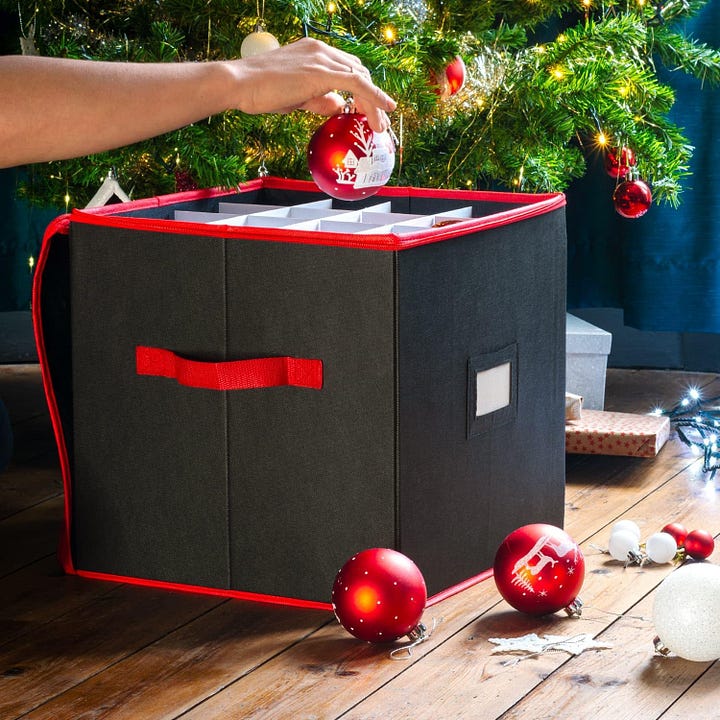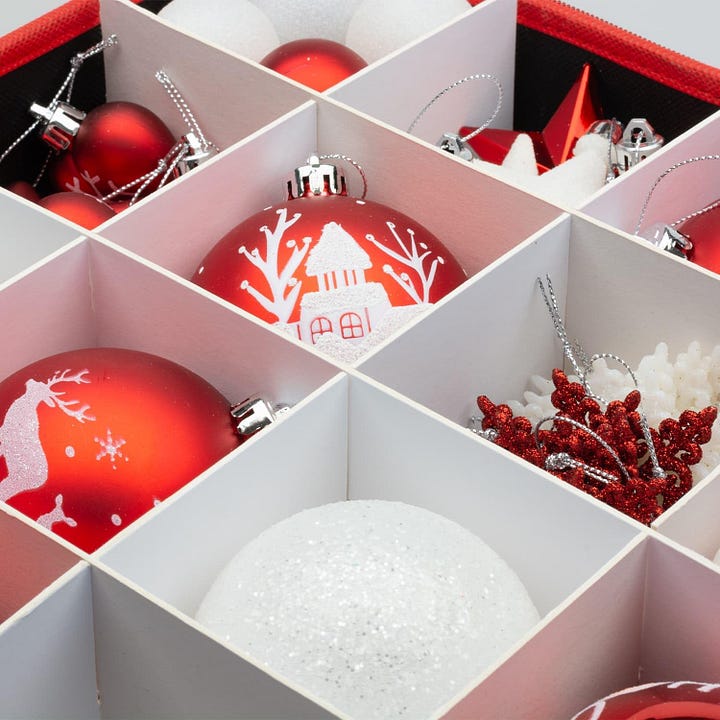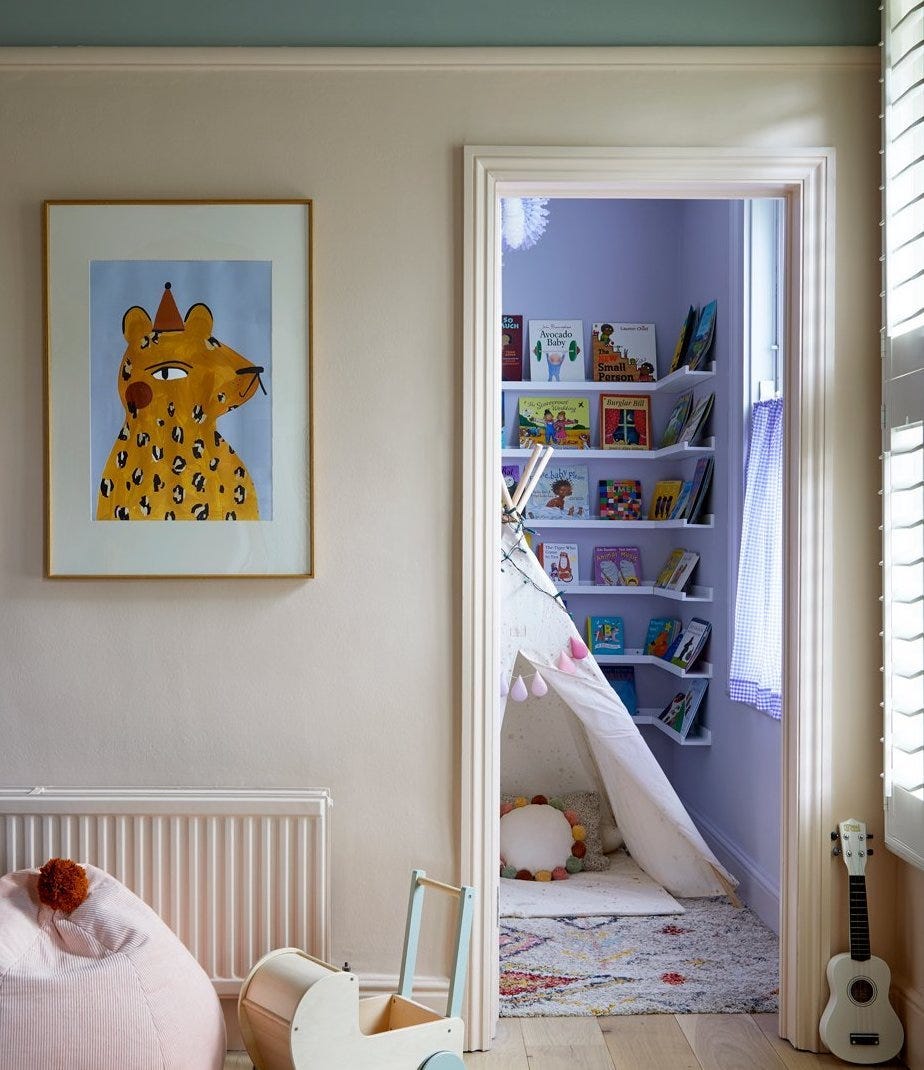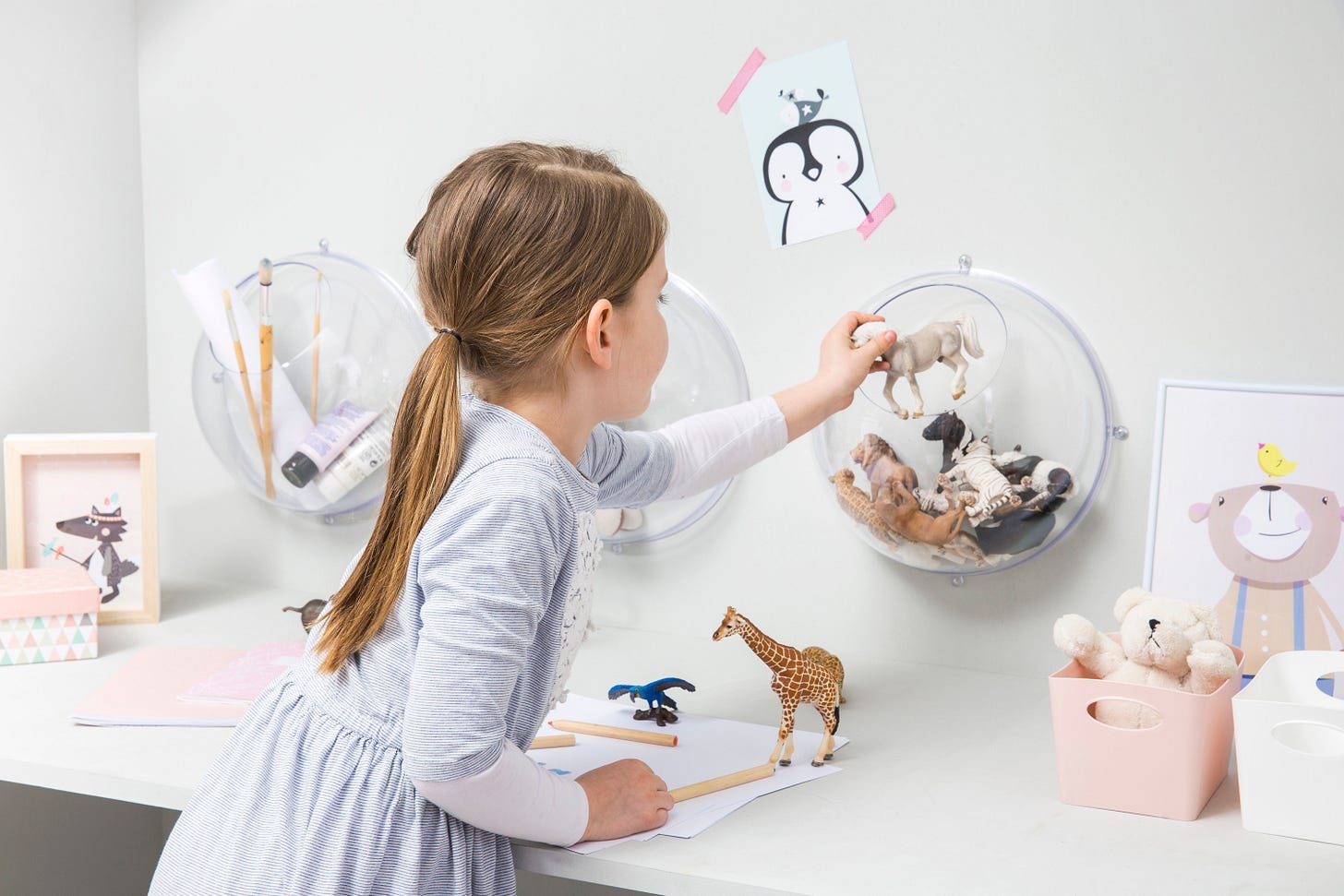8 ways to declutter your home
Get organised with our practical guide on how to streamline your family home featuring easy-to-action tips, smart storage ideas and expert strategies
Hands up if you’re itching to start afresh and sort out the post-Christmas clutter in your home 🙋♀️? I don’t know about you but, for me, my physical surroundings play a big part in how I feel. If my home is in disarray, I can get really stressed out and often find it difficult to concentrate. Tidy home = tidy mind and all that! Which is why whenever January rolls round I tend to find myself, especially after a bountiful Christmas, looking to refresh my home and have a good old declutter.
So if like me, you’re ready to tidy away all the new clothes, toys and presents, pack up all the Christmas decs and get your family home (and life) back into some kind of order you’ll love today’s newsletter post. We’ve put together 8 key declutter rules that we swear by. Enjoy!
1. DITCH THE DECS


If you haven’t already, it’s time to pack away those decorations for another year. First, tackle the tree. Packing baubles and ornaments away in labelled storage boxes makes things a lot easier, and when it comes to the dreaded string lights we’ve learned the hard way – for a tangle-free mess, simply wind the lights around a piece of leftover cardboard or kitchen roll tube (you’ll thank yourself next year). Plus, don’t forget to do a sweep of each room in your home to find the remaining decor – there’s nothing worse than realising you’ve left a garland on top of your dresser once you’ve already made a trip to the loft.
2. SET CLEAR GOALS
Define specific decluttering goals tailored to your family’s needs. What are your daily bugbears? Is it an overflowing drawer (or multiple!) or perhaps the rigmarole of the evening toy tidy-up? Prioritise what’s most important to you and break it down. Consider creating more functional spaces, but also reducing visual chaos and promoting a sense of calm in the home (or at least when the kids are in bed!)
3. INVOLVE THE WHOLE FAMILY
Let’s face it, decluttering is a mammoth task but many hands make light work right? While it might be a bit chaotic, it’s worth involving the kids in the process, encouraging them to participate in decision-making about their belongings. By giving them some authority and ability to make their own choices, you’re more likely to get rid of that supersized stuffed toy you accidentally won at the school fair, especially while their shiny new Christmas toys still take precedent.
4. SORT AND CATEGORISE
“Decluttering an entire home can feel overwhelming and can quickly get disorganised, so I’d always recommend tackling one room at a time, working your way down from the bedrooms all the way through the key living spaces, to the entryway and front door,” advises Sam Greig, senior designer at Swoon. “Be rigorous and take the things you no longer need and separate them into different piles: one for donating, one for recycling, and another for re-selling on platforms like Vinted, Facebook Marketplace, or eBay. Use the manta ‘if I haven’t used this in the past year, I don’t need it anymore’. Consider which items truly fit with your personal style, and which were an impulse purchase that don’t belong in your home.”
Teach your children the value of giving by involving them in the donation process. Identify local charities or organisations that accept gently used toys, books, and clothes, and make it a family tradition to contribute regularly.
5. TACKLE THE TOYS

Let’s be honest, one of the worst and most time-consuming tidy-up processes is sorting the toys, especially post-Christmas. Now’s the time to consider implementing a toy
rotation system. Research suggests that having too many toys can overwhelm young minds and hinder their creativity, imagination and concentration skills, so toy rotation is a great way to combat toy boredom and motivate deeper, more meaningful play – plus it’ll save your sanity! Storing a select number of toys on a low accessible shelf is key (IKEA’s Kallax is a simple and effective storage system we see used time and time again), while the rest of their toys can be stored neatly away behind closed doors.
BigJigs Toys suggests rotating around 10 toys every 1-2 weeks, including a mix of sensory toys, construction toys, pretend play sets, musical or percussion instruments, puzzles, soft toys and arts and crafts. “Doing it on a Friday can help to give you a more relaxed weekend (here's hoping!), as they’ll have a bunch of ‘new’ toys to play with. You don’t have to swap out every toy either. Keep an eye on what they’re playing with most and just replace the toys that aren’t captivating them.”
6. CREATE DESIGNATED SPACES

One thing that can help keep you on top of things is assigning specific areas for different activities, such as a reading nook, art corner and play zone. Clearly defined spaces help maintain order and make it easier for children to clean up after themselves. Just like with toys, you can rotate books by displaying a few key titles, whether they’re seasonal or favourite stories, in a wall-hung rack, with the rest on a bookshelf or book tidy. As for the creative corner, use caddies to contain art supplies, and invest in either a hobby trolley or wall-hung unit with drawers such as IKEA’s Trofast unit for art materials. Again, rotation can avoid overwhelming the space and maintain interest – no-one wants a Playdoh, paint and glitter mashup. If you’re constantly being overwhelmed by ‘masterpieces’ from your mini-me artists, consider a way of displaying them that isn’t going to blow your whole aesthetic – the My Little DaVinci picture frames can hold up to 50 creations. Once they’re full preserve your most treasured pieces by taking snaps on your phone and creating a digital portfolio or turn it into a book so you can cherish the memories without the paperwork.
7. REWORK YOUR EXISTING STORAGE

Inevitably, once you’ve done your purge, there will still be ‘essential clutter’ that won’t look chic on display so you’ll need to hide it behind closed doors. Reconfiguring your existing storage to ensure more efficient use of space and better organisation is key. “When it comes to kitchen cupboards, I’d always advise zoning your storage, keeping utensils and crockery in one area, and food in another,” says Ruth Lavender, design expert at Benchmarx Kitchens. “Locating pots, pans, oven dishes and cooking utensils near the oven and hob will also ensure they’re easy to reach in the midst of meal prep, while situating occasional-use electrical appliances in the same cupboard will mean you know exactly where they are when you need them. The same goes for dry produce, tinned items, breakfast food, and herbs and spices – grouping is key. Store your most-used items in cupboards that are easy to reach, and tuck away less frequently used objects. Baskets, tiered cupboard organisers and stackable storage containers are handy items to keep cupboards neat and tidy, as well as helping to maximise awkward and hard-to-reach areas.”
When it comes to bedrooms, drawer dividers are ideal for organising smaller items, especially socks, underwear and baby clothes, while hanging clothes organisers and space-saving drop-down hangers can help boost wardrobe rail space. Look at under-bed storage solutions whether that’s an ottoman bed or simple storage cases for stowing out-of-season clothing and duvets etc – vacuum storage bags will help optimise storage further.
8. ESTABLISH A DAILY CLEAN-UP ROUTINE

It’s easier said than done, but going forwards try to foster a habit of a ‘tidy-up time’ for the entire family. Set aside just 5 minutes pre-bedtime each day to organise and put away items, preventing clutter from accumulating over time. At home we’ve adopted the school’s mantra of ‘choose it, use it, put it away’, which works pretty well and helps prevent the onslaught of toys during playtimes so there isn’t one massive clean up at the end.
Have you got any top decluttering tips you want to share with fellow Nest subscribers? Reveal your decluttering secrets in the comments below.



